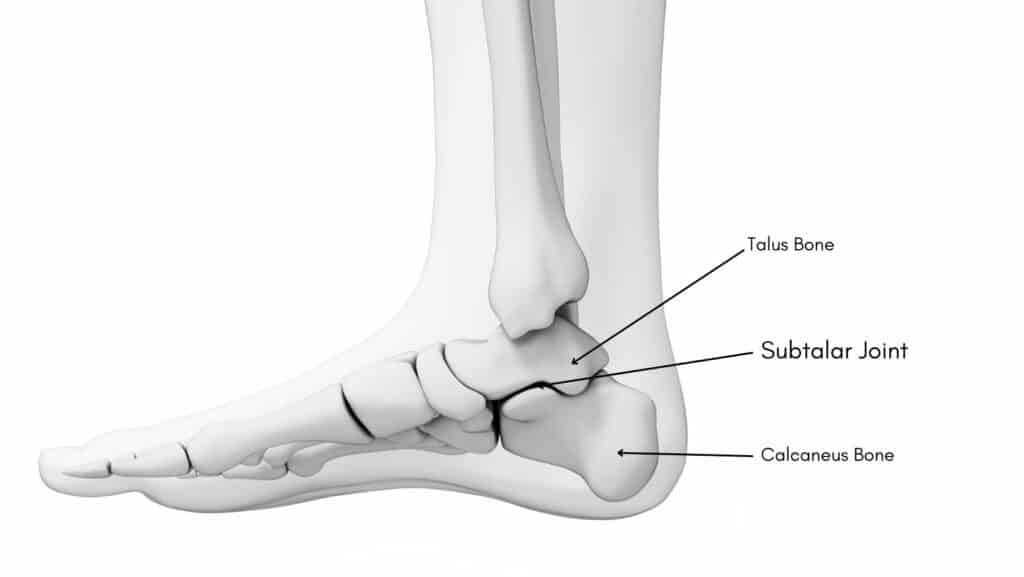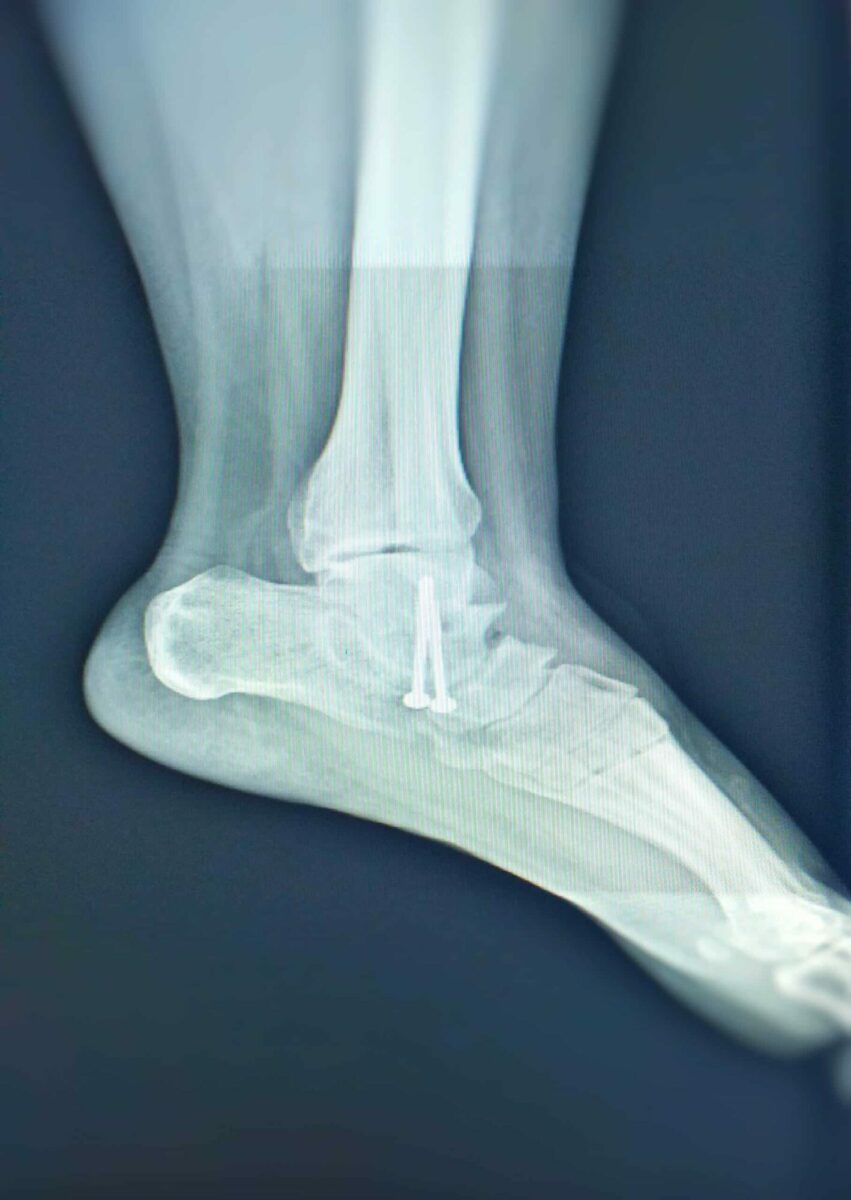Anterior Ankle Impingement
Read More >
The Subtalar joint is positioned underneath the ankle joint and is formed by articulating the Talus Bone and the Calcaneus Bone. The Subtalar joint allows the heel to move from side to side, allowing the foot to walk on uneven surfaces and change direction when walking or running, and it also works as a shock absorber.
Most bones are covered by hard cartilage to help protect the bone, but if this becomes damaged or wears down, it can provide less protection and cause subtalar joint pain, inflammation and Subtalar Joint Arthritis.

The symptoms of Subtalar Joint Arthritis include pain in the hindfoot when walking on uneven surfaces, stiffness first thing in the morning and pain that is worse when the weather is cold.
In the early stages of Subtalar Joint Arthritis, patients can find that their symptoms alleviate with activity, but as the condition deteriorates, pain becomes constant. We observe that patients become more inactive due to pain levels, which can contribute to increased body weight, which is a challenge as this also worsens the symptoms of Subtalar Joint Arthritis.
Patients can notice stiffness first thing in the morning that eases within 30 minutes of walking, with a similar pattern when walking after sitting for long periods.
The ankle joint may appear enlarged with swelling and redness, and the joint can be warm to the touch.

The primary causes of Subtalar Joint Arthritis include obesity, previous trauma to the joint, repetitive ankle sprains, previous surgery or a talocalcaneal coalition.
Other causes of Subtalar Joint Arthritis include weakening of the Posterior Tibial Tendon, which results in an adult flat foot deformity and instability from joint hypermobility.
A clinical assessment from a Physical Therapist or a Podiatrist can identify the subjective symptoms of Subtalar Joint Arthritis alongside a physical examination to identify stiffness, reduced range of movement, and pain is sufficient to diagnose Subtalar Joint Arthritis clinically.
Sometimes, a therapist may refer for imaging to confirm the diagnosis, usually done with a simple x-ray. At the same time, an MRI may be requested to rule out other soft tissue pathologies in the hindfoot and ankle joints.

Conservative treatment for Subtalar Joint Arthritis should be carried out under a Physical Therapist or Podiatrist’s guidance. A Physical assessment can identify muscular imbalances, stiffness and balance deficits. A gait analysis can be performed to identify gait issues that may be overloading the subtalar joint.
Soft tissue massage and mobalisations of the Subtalar Joint and ankle can increase the range of movement, while ankle taping or an ankle brace can provide additional support and reduce pain levels for a patient while walking.
A comprehensive rehabilitation programme is essential, while advice on footwear and a discussion on the necessity of insoles can help support the hindfoot and increase a patient’s exercise capacity.
Non-impact activity is significant with activities such as swimming, cycling and ski-erg, providing cardiovascular fitness and assisting with weight management.
If required, a referral to a nutritionist is advised to control a patient’s body weight, while simple pain relief methods such as icing and anti-inflammatories are also helpful.

Injections such as corticosteroid injections can help reduce joint pain by lowering inflammation levels.
However, this has a limited effect and should be used as a window of opportunity to facilitate Physical Therapy rather than a solution.
Surgery is the last resort for these cases; sometimes, an arthroscopy can be effective by removing debris and cleaning the joint, while an ankle fusion is required in severe cases.
This is not medical advice. We recommend a consultation with a medical professional such as James McCormack. He offers Online Physiotherapy Appointments weekly or face-to-face appointments in his clinic in Fulham.